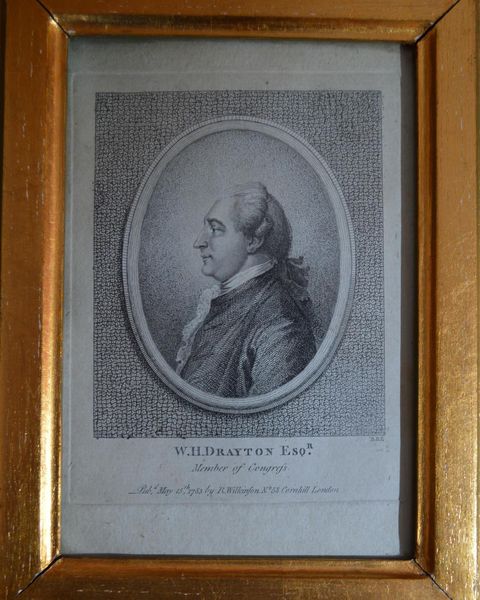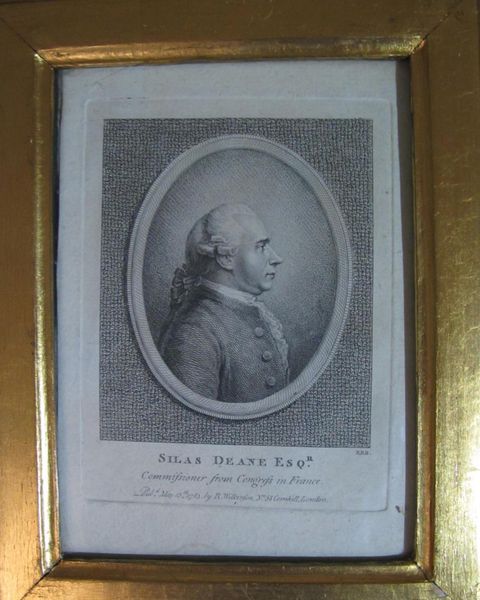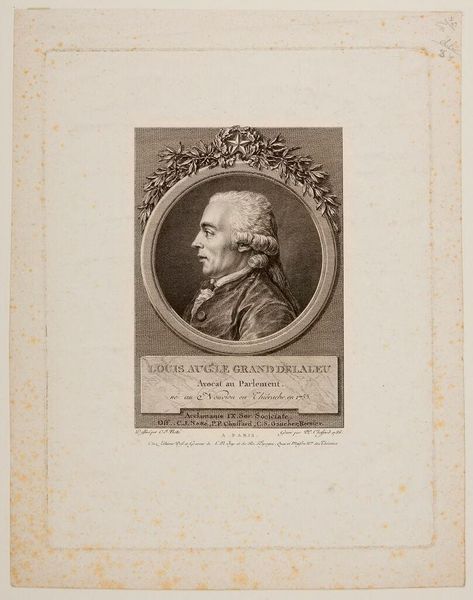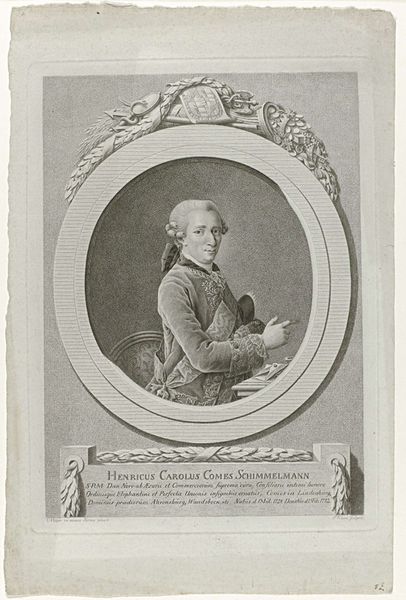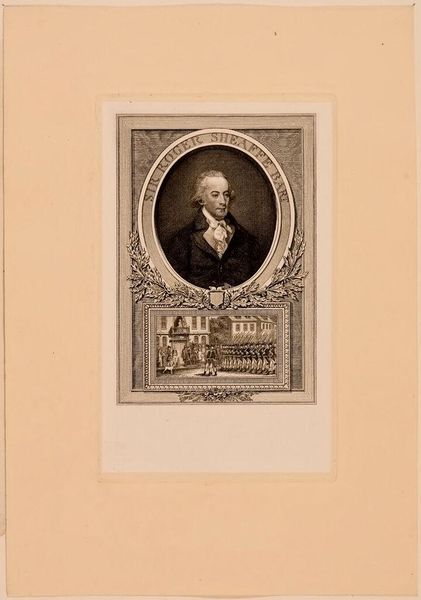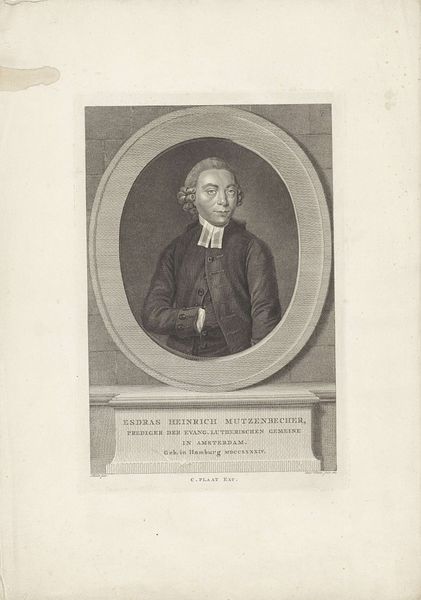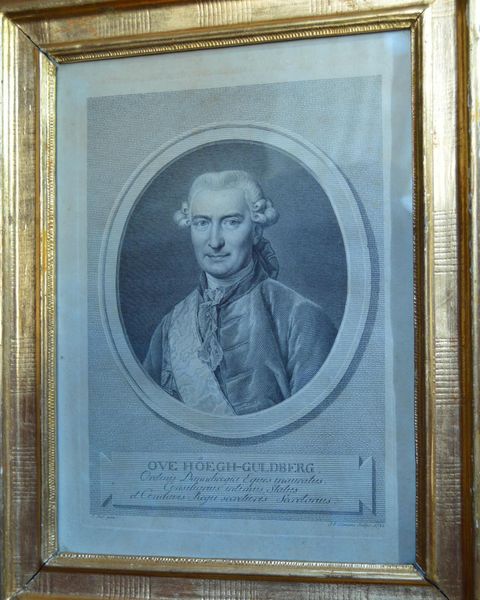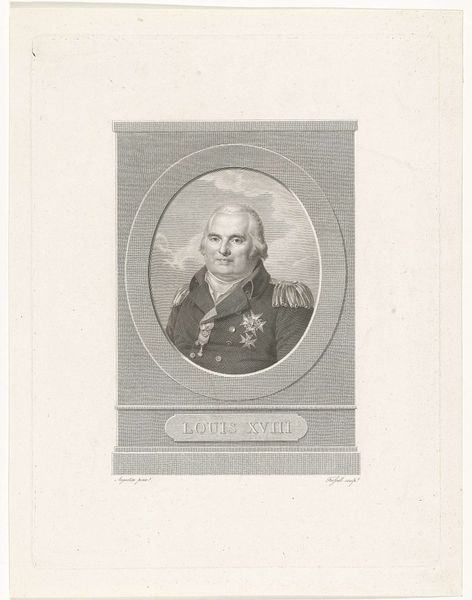
'General Reed. Member of Congress. President & Commander in chief of the State of Pensylvania' 1783
0:00
0:00
#
portrait image
# print
#
typeface
#
block of text
#
film poster
#
portrait reference
#
thick font
#
golden font
#
historical font
#
columned text
#
statue
Dimensions: 165 mm (height) x 110 mm (width) (brutto)
Editor: This is an engraved portrait of 'General Reed. Member of Congress. President & Commander in chief of the State of Pensylvania,' dating back to 1783. It’s a print, and I’m struck by how…official it feels. Almost like propaganda. What can you tell me about it? Curator: From a materialist perspective, this isn't simply an image of a man; it’s a commodity. Consider the printmaking process. The labour involved, the distribution networks. It was published in London, a centre of print production at the time. What does it mean to circulate an image of an American leader in the former colonial power? Editor: That's interesting. So, the physical object and where it was made and sold gives it more meaning. Were these prints common? Curator: Precisely! The act of producing and circulating such prints speaks volumes. Think about who had access to these images. Was it intended for a broad audience, or a more elite, literate class? The material – the paper, the ink, the printing technique – would have determined its cost and therefore, its accessibility, shaping who consumed this representation of power. Editor: So, it’s not just *who* is in the portrait, but *who* is consuming the portrait that matters. What are your thoughts? Curator: Absolutely. Furthermore, we should consider the engraver, B.B.E. The name is right there on the side of the artwork, which signifies a contribution and some acknowledgement of their production labor, beyond the General pictured. What impact did that decision of acknowledgement have at that time? Editor: I never considered the implications of acknowledging the engraver or the social dynamics of an imported artwork. Fascinating! Curator: Indeed. It prompts us to question the power structures embedded in the creation and distribution of imagery.
Comments
No comments
Be the first to comment and join the conversation on the ultimate creative platform.
